What is Sustainable Fashion?
Sustainable fashion is the products, processes, and activities stakeholders (policymakers, brands, consumers) use to achieve a carbon-neutral fashion industry driven by ecological integrity, equality, social justice, and animal welfare.
As a global movement, sustainable fashion aims to use eco-friendly materials throughout the product lifecycle, from production to consumption and all recycling aspects. It also supports local communities via fair wages and even regenerates the environment via garments that biodegrade back into nature.
The sustainable fashion movement also seeks to address the carbon footprint created by the global fashion industry, air pollution, water consumption and pollution, workers’ health, and the global impact on the millions working in this industry.
The sustainable fashion movement is built on several other ethical approaches to creating, consuming, and disposing of fashion, namely:
- Ethical Fashion
- Fair Trade
- Recycled Fashion
- Slow Fashion
- Circular Fashion
- Traceable Fashion
Sustainable Fashion Definition
The most accepted definition of Sustainable Fashion states:
“Sustainable fashion is an all-inclusive term describing products, processes, activities, and actors (policymakers, brands, consumers) aiming to achieve a carbon-neutral fashion industry built on equality, social justice, animal welfare, and ecological integrity.”
Wikipedia has a similar definition of Sustainable Fashion (also defined as Eco-fashion and Re-fashion):
“Sustainable Fashion is a movement and process fostering changes to products and the fashion system, pushing towards greater ecological integrity and social justice. Sustainable fashion concerns more than just addressing fashion textiles or products.”
Sustainable Fashion Vs. Fast Fashion
Fast fashion is a method of producing inexpensive clothing quickly to respond to the latest fashion trends.
In the age of fast fashion, shopping is evolving into a form of entertainment, and customers are contributing to what sustainability experts refer to as a throwaway culture.
Customers often discard fashion goods rather than recycling or donating them, resulting in a considerable environmental burden.
The global fashion industry consumes 93 billion cubic meters of water annually — enough to meet the water needs of approximately five million people.
Approximately 20% of the world’s sewage water comes from the fabric dyeing and treatment industries. Nearly 87% of cloth waste is incinerated or disposed of in landfills.
The fashion industry is responsible for 10% of annual global carbon emissions, surpassing the combined emissions of all international flights and maritime shipping. It uses approximately 1.7 billion tons of CO2.
Every year, half a million tons of plastic microfibers are released into the ocean, equivalent to 50 billion plastic bottles that end up in our food chain.
In comparison, sustainable fashion products address the socio-economic needs of people and brands, as well as environmental concerns.
Sustainable Fashion Origin
The collapse of the Rana Plaza factory in Bangladesh in 2013, one of the largest garment industry disasters the world has ever seen, gave rise to social movements advocating for a more sustainable fashion industry.
This tragedy resulted in over 1,100 deaths, showcasing to the Western world how costly cheap clothing is, adding to fast fashion’s social and environmental costs.
Shortly after the factory collapse, a documentary film called ‘The True Cost’ was released, revealing even more information about the devastation caused by the fashion industry.
With a deeper understanding of the industry’s actual costs, activist groups began encouraging consumers and brands to change their ways and be accountable for the social and environmental impacts of their choices.
Sustainable Fashion – Built on 8 Core Pillars
Sustainable fashion is an all-encapsulating term comprising 8 key parts.
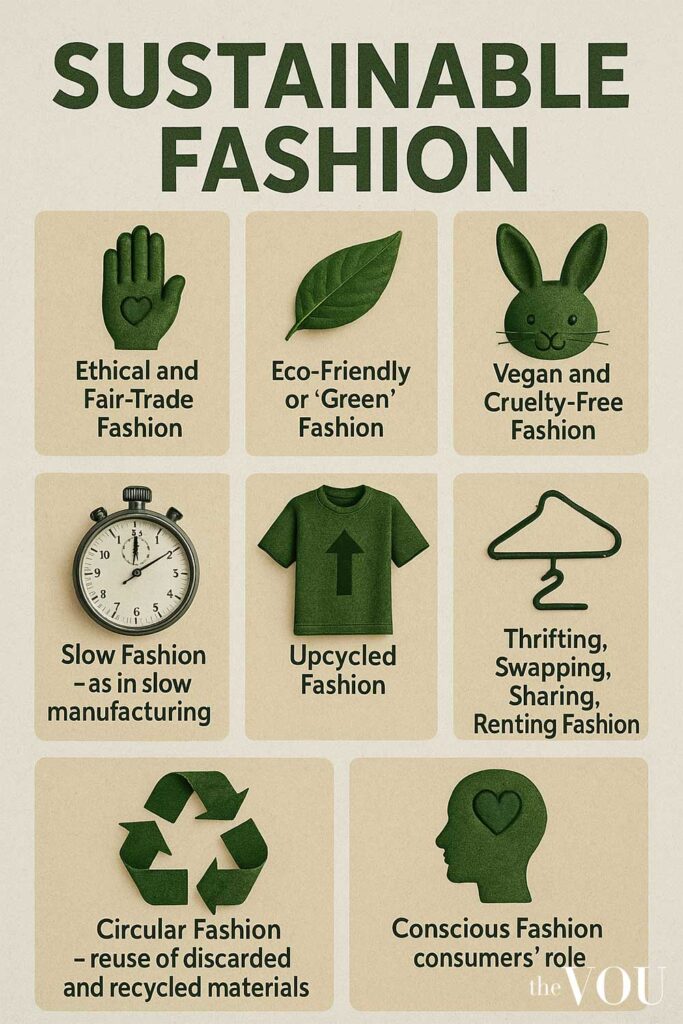
- Ethical and Fair-Trade Fashion
- Eco-Friendly or ‘Green’ Fashion
- Vegan and Cruelty-Free Fashion
- Slow Fashion – as in slow manufacturing
- Upcycled Fashion
- Thrifting, Swapping, Sharing, Renting Fashion
- Circular Fashion – reuse of discarded and recycled materials
- Conscious Fashion – consumers’ role
1. Ethical and Fair-trade Fashion
Ethical and Fair Trade are two great examples of sustainable fashion.
Ethical and Fair-trade activities (in fashion) are related to the welfare of industry workers.
Child labour, gender rights, safe working conditions, fair-trade manufacturing, and all other social justice aspects.
Ethical and Fair-Trade Fashion can be further detailed based on the activities conducted.
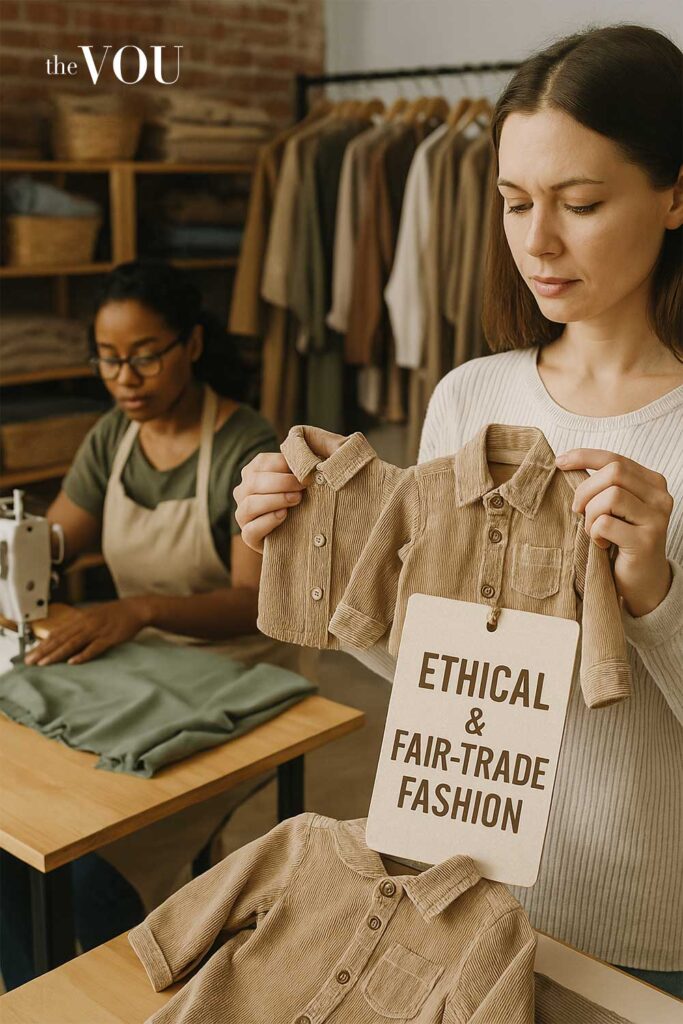
Ethical fashion companies, activists, and brands are concerned with the well-being of people, both mentally and physically.
On the other hand, Fair-trade organisations and brands ensure the creation and maintenance of supply chains in which farmers and manufacturers receive a fair share of the cut in exchange for their products.
Together, both terms cover the socio-economic aspects of the fashion industry.
As such, all actors involved in these actions seek ways to improve working conditions, wages, and fair trade practices.
2. Eco-Friendly and Green Fashion
Both terms are used to describe environmental problems caused by the fashion industry.
Waste creation, water and soil pollution, and reckless resource use accelerate the global climate crisis.
Over 90% of clothing brands use plastics and other non-biodegradable fibres that cause environmental damage at scale.
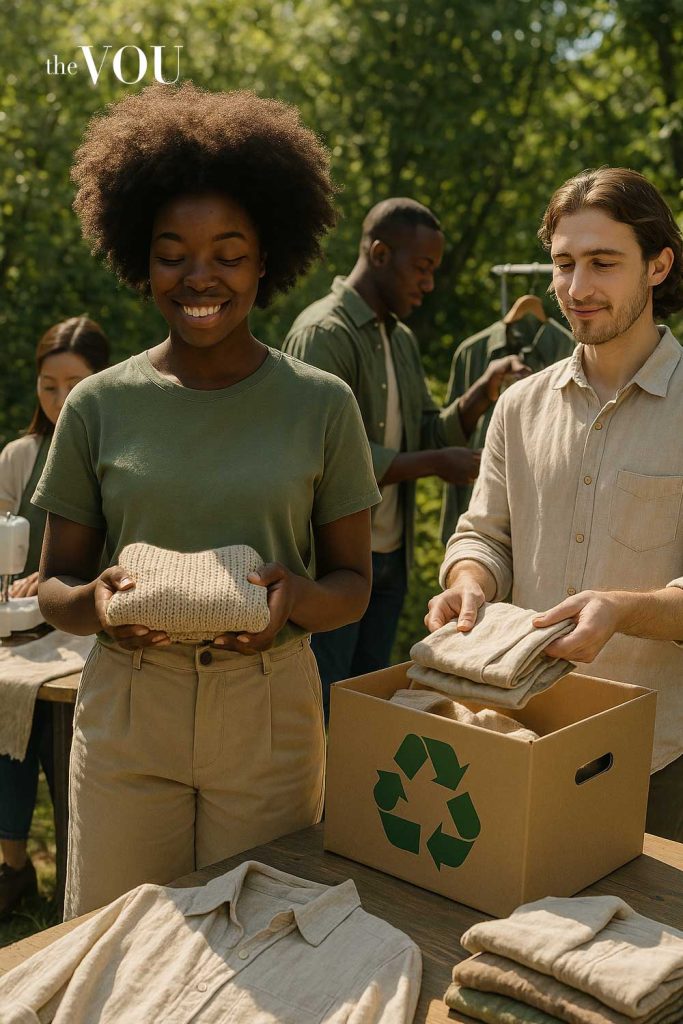
For example, every year, over 70 million barrels of oil are used to make polyester fibres that eventually end up in oceans, killing animals or people by entering the food chain.
As a solution, green fashion companies advocate replacing plastics with eco-friendly, biodegradable, and natural fibres that also benefit the environment.
To date, the results are positive, as the number of companies using eco-friendly and green materials, such as organic cotton, hemp, mushroom leather, and kelp leather, is on the rise.
3. Vegan and Cruelty-Free Fashion
Vegan and Cruelty-free Fashion terms describe products manufactured without using materials of animal origin or obtained without cruel means.
Similarly, all activities undertaken by vegan and cruelty-free fashion campaigners aim to bring to consumer attention industrial animal farming and animal exploitation for fashion.
However, there are arguments that vegan fashion may cause more harm than good.
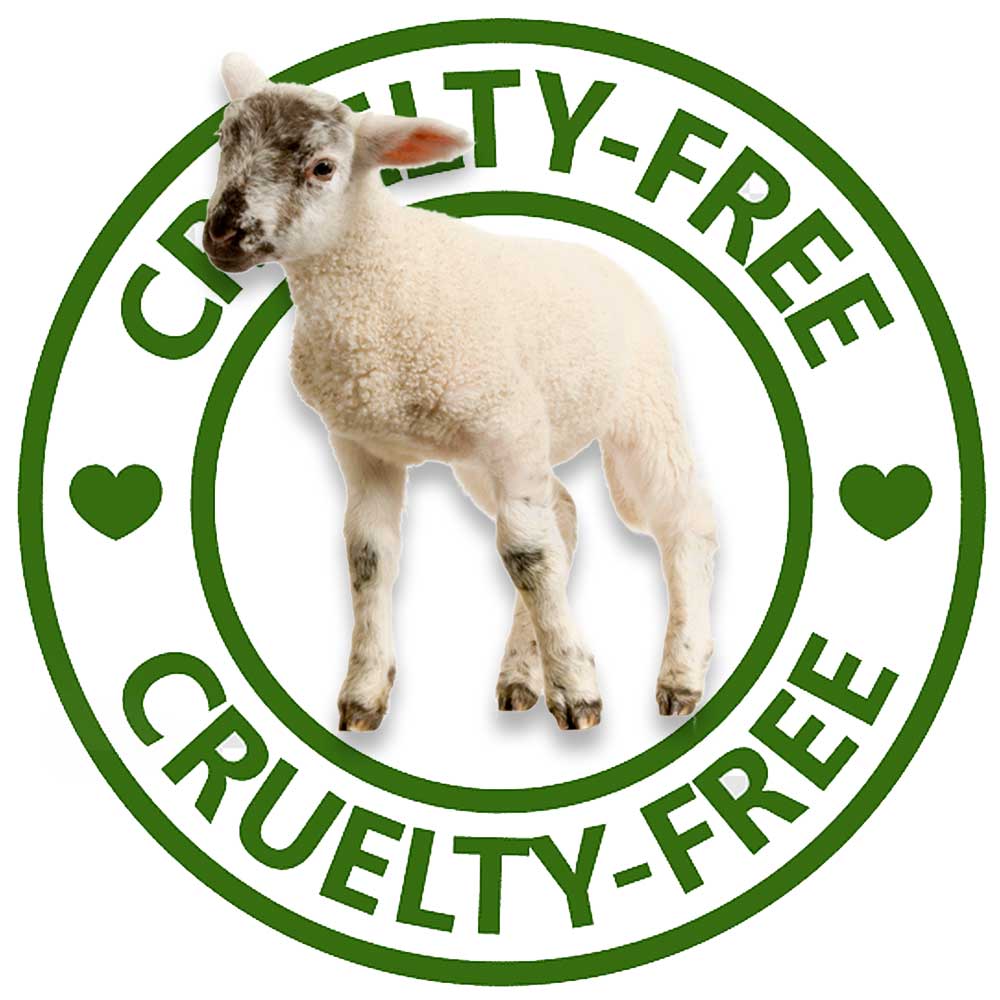
The argument states that most PETA-approved ‘Vegan Fashion Brands’ use PVC and plastic-based alternatives to animal leather, which saves animals from sacrifice but kills them by polluting their environment.
More recently, proponents of the vegan fashion movement have insisted that a vegan clothing brand must also consider its environmental impact to qualify as a ‘sustainable fashion brand. ‘
Most cruelty-free and vegan clothing brands achieve this by using leather alternatives made from plant-based materials, such as fruits, mushrooms, or even synthetic options in the lab.
4. Slow Fashion
Slow Fashion is a recent term adopted to describe a way of manufacturing fashion that is at the opposite pole of ‘fast fashion.’
Compared to industrial mass manufacturing, slow fashion is produced by expert artisans; hence, ‘artisanal fashion’ is used to describe the same concept.
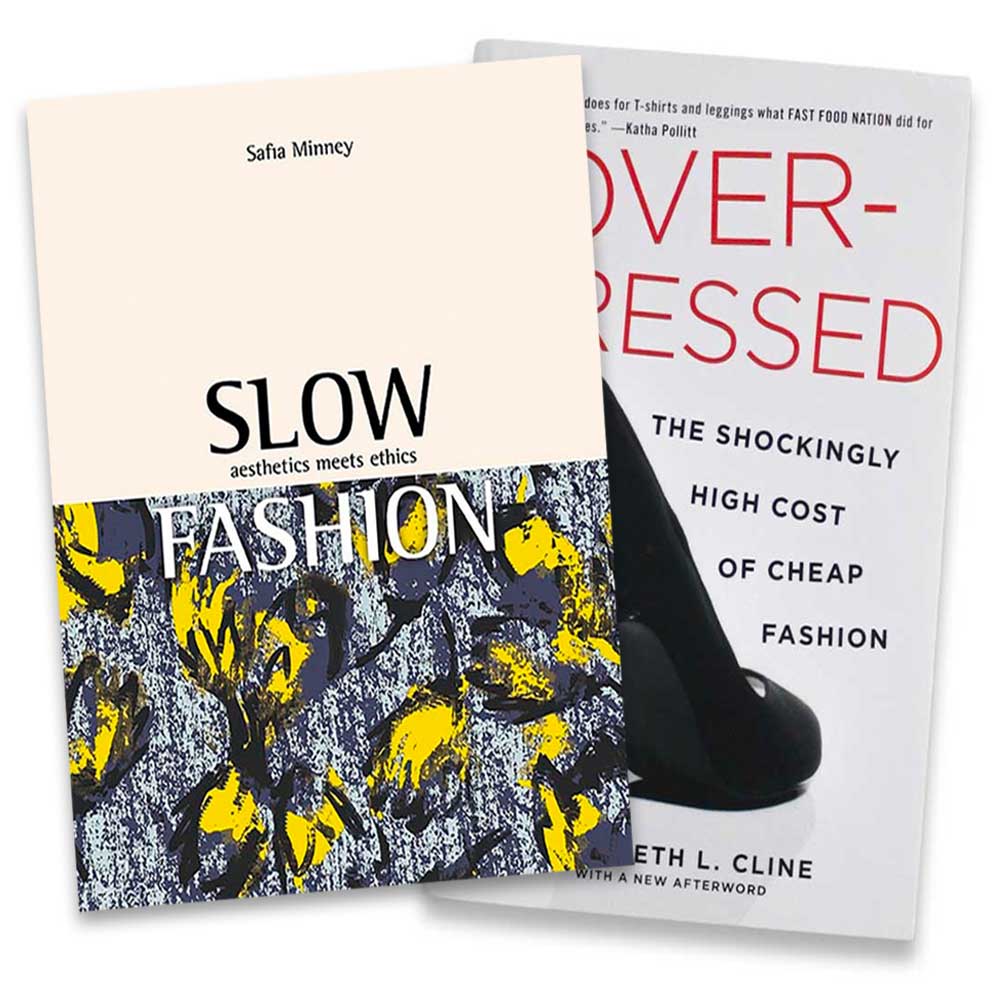
However, it is not just the use of finite materials and wasteful manufacturing practices that deplete the planet’s resources and create pollution.
Fashion consumption and garment maintenance play equally essential roles in achieving sustainable fashion – more about that below, in the ‘Conscious Fashion’ section.
5. Upcycled Fashion
Upcycled Fashion is a term that describes the reuse and repurposing of textiles, materials, and garments to create new fashion.
This facet of sustainable fashion, upcycled, is very popular among contemporary fashion designers and celebrities, to the point of giving rise to a new form of high-end luxury fashion.
As old fabrics carry their own stories of usage, wear, and life, Upcycled Fashion is more than a new way of reviving and turning old fabrics into new clothes.
The inclusion of upcycled materials in the making of new garments adds uniqueness to the final product.
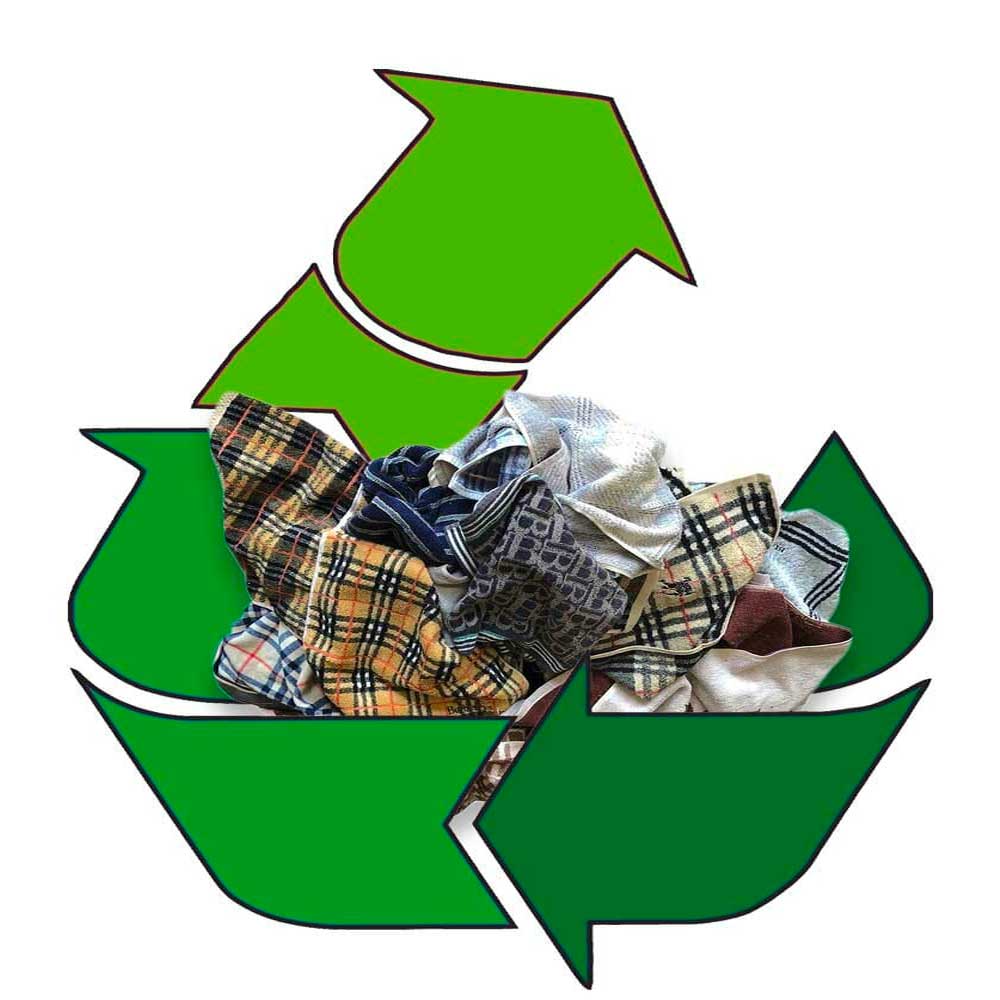
As such, creating couture through upcycled fashion ensures that the final piece is always unique and, therefore, rare.
However, opinions are split regarding the relevance of Upcycled Fashion to achieving sustainability in fashion.
The benefits of using upcycled materials to create clothing and accessories are tremendous:
- Upcycled Fashion helps with waste reduction.
- Reuses materials that would otherwise end up in landfills.
- Reduces carbon and toxic gas emissions resulting from manufacturing and transport.
On the other hand, upcycling has environmental issues that can’t be ignored:
- Upcycled garments release twice the number of microfibres that pollute oceans and the food chain, killing animals and people.
- Upcycling requires more energy and chemicals than would have been used in the case of novel materials.
6. Thrifting, Swapping, Sharing, Renting Fashion
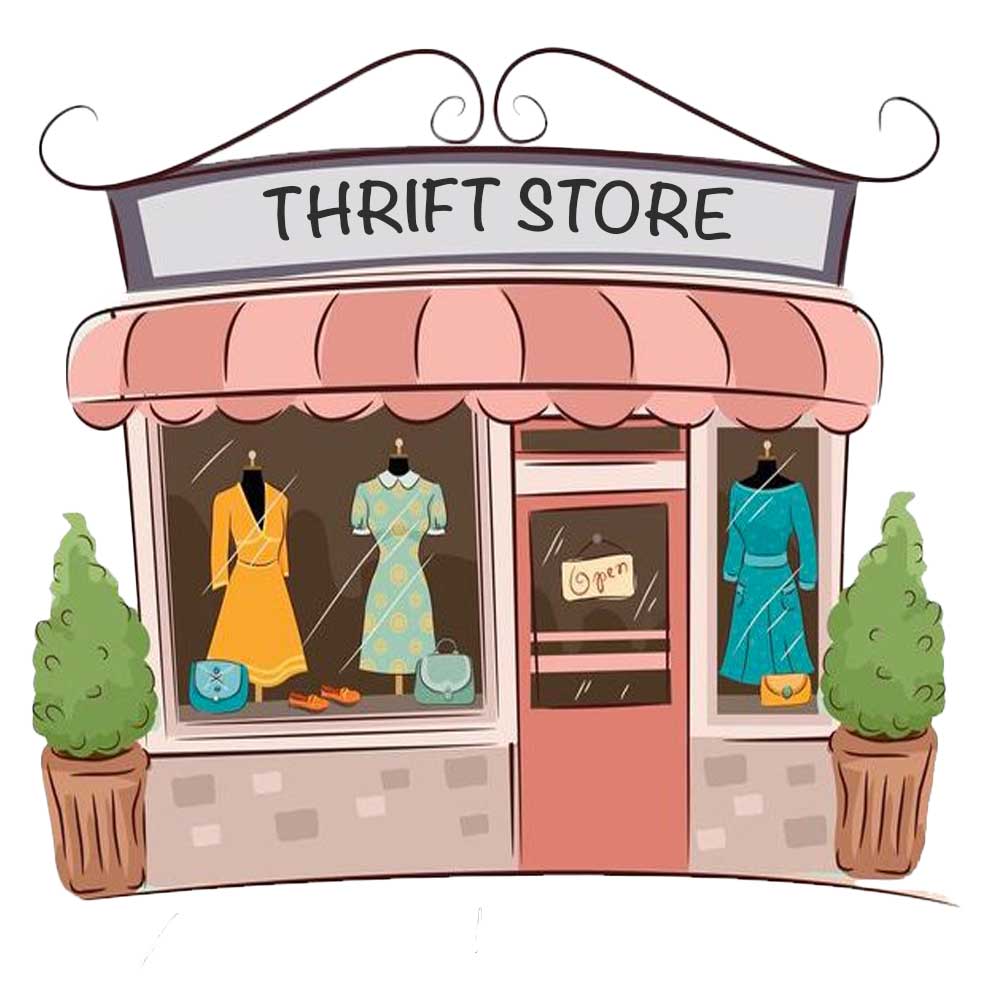
Secondhand clothing, swapping, sharing, clothes, thrifting, and renting fashion are great examples of sustainable fashion.
Available in thrift stores and second-hand shops, thrifting is a tremendous way to avoid the negative impact of fashion manufacturing.
The garments already exist, so it is unnecessary to manufacture them again.
Moreover, this collection is free from the use of toxic chemicals, the release of greenhouse gases, and the application of pesticides.
However, there is a less-discussed downside to renting, thrifting, swapping, and sharing, all similar forms of second-hand and vintage fashion shopping.
Ilaria Urbinati, a celebrity fashion stylist who has Rami Malek, Dwayne Johnson, Armie Hammer, Bradley Cooper, and John Krasinski amongst her clients, explains:
“WITH one hand, you’re doing good for the planet. WITH the other hand, you’re doing harm to yourself.”
The problem stems from the difficulty of assessing the quality and the condition of the garment you will procure this way.
Little by little, animal leather or plastic garments will release toxic chemicals that can irritate your skin.
Over time, these substances can affect your hormonal balance, which may be evident in your skin, hair, nails, and other areas.
7. Circular Fashion
Circular fashion is another excellent example of sustainable fashion.
The term describes ‘closed-loop’ systems or manufacturing approaches that aim to recover discarded materials and waste and reintegrate them into production.

There are many types of circular fashion innovations. Still, the most common form is a ‘closed-loop’ system, which involves recycling polyester and plastic-based materials and returning them to production.
8. Conscious Fashion
Conscious fashion is a popular example of sustainable fashion, seen as a way for consumers to address the problems caused by fast fashion.
Above all, fashion’s environmental impact depends significantly on consumers’ choices and the duration for which they wear their outfits.
Since the emergence of fast fashion, garments have been used half as much as they were 15 years ago.

This is caused in equal measure by the lower product quality and the insatiable desire to buy and showcase the latest trends.
Therefore, Conscious Fashion proponents aim to educate consumers on the value of choosing slow over fast or on how to care for their garments.
For example, washing and drying a pair of jeans accounts for two-thirds of the total energy consumed during the garment’s life.
The laundry process alone accounts for more than 80% of the total energy used for washing underwear.
The takeaway is that, regardless of sustainability, washing garments requires electricity, water, and detergent.
Why is Sustainable Fashion Important?
One of the most asked questions is: ‘Does the world need sustainable fashion?’ Yes, it does, and here are the top 5 reasons:
1. Reduced Waste
Due to urbanisation, population growth, and changing consumer shopping patterns, the global production of municipal solid waste is expected to rise to 3.4 billion metric tons by 2050.
Sustainable fashion brands play a crucial role in reducing waste generation by manufacturing premium apparel from long-lasting materials.
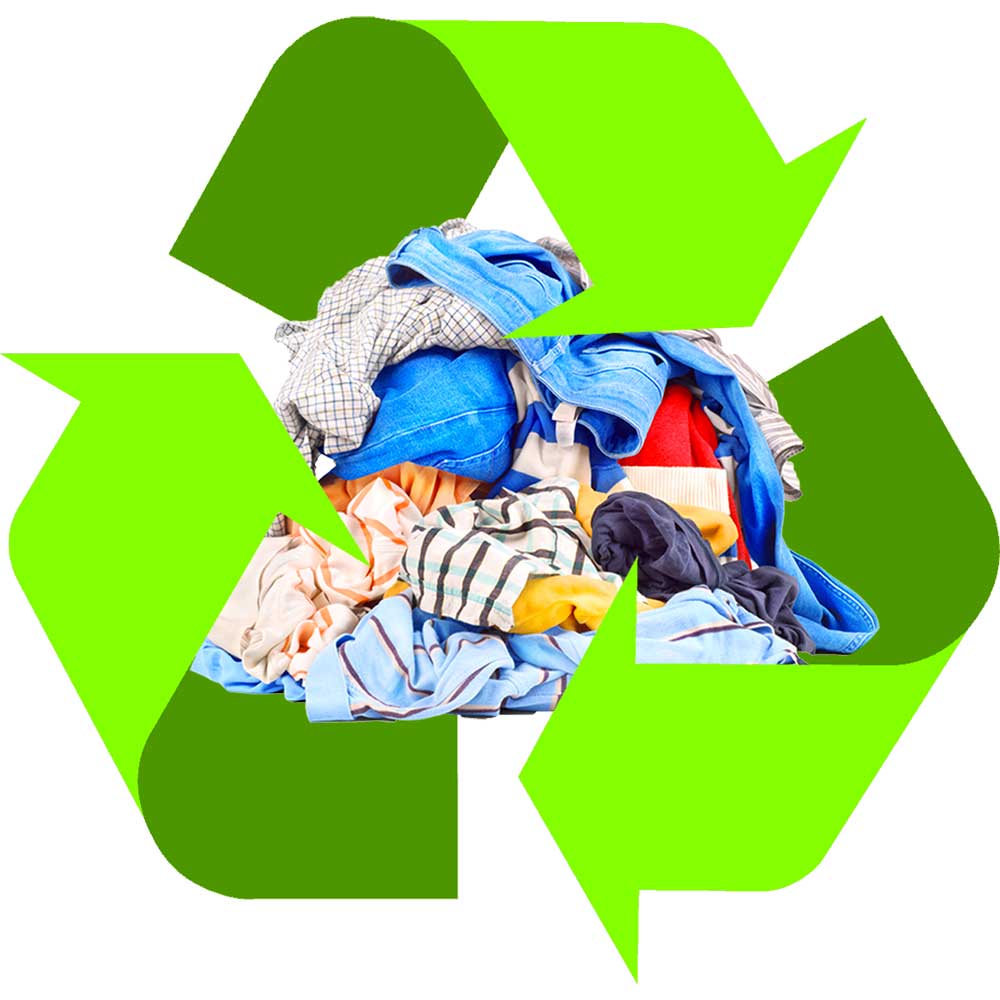
This enormous waste is created by fast-fashion companies that launch weekly fashion trends and fulfil them with low-quality, low-priced products.
In comparison, sustainable brands focus on quality clothing products from long-lasting materials.
Moreover, sustainable fashion brands rarely follow fast fashion trends.
2. Fair Wages and Proper Working Conditions
Cheap, fast fashion garments are made possible by harsh working conditions for garment workers.
Most fast fashion brands produce garments in developing countries where workers are paid less than a living wage.

Poor safety and health conditions, long working hours, and the constant pressure to produce all create an environment of worker exploitation.
Frequent child labour accusations have also been brought against fast fashion brands.
On the other hand, sustainable fashion brands prioritise fair wages and safe working conditions for all employees.
3. Reduced CO2 and Greenhouse Gases
Fast fashion has a significant carbon footprint, encompassing material creation, manufacturing, transportation, and the decomposition of textile waste in landfills.
For example, most fast fashion clothes are made from petroleum-based materials.
Think acrylic, nylon, and polyester; production and disposal require significant energy.

On the other hand, sustainable fashion utilises biodegradable materials from natural or recycled fabrics.
These materials require little to no chemical treatment, less energy, less water, and no pesticides or fertilisers to grow.
4. Water Saving
The fashion industry is one of the largest water consumers globally.
The water is consumed not only for washing garments but also during manufacturing, dyeing, and finishing processes.
To put that into perspective, it takes approximately 2,720 litres of water to produce one cotton shirt and a staggering 7,000 litres to produce one pair of jeans.

In addition to consuming water, clothing production impacts the environment by polluting freshwater with toxic chemicals that find their way into waterways.
In comparison, most sustainable fashion brands have “water on budget” policies that limit water usage during the production of clothing.
Moreover, sustainable fashion prioritises organic textiles made from linen, hemp, and organic cotton, which require little to no water during production.
5. Animal Lives
Animals are vital to our ecosystem, each playing a crucial role in making Earth habitable.
As such, any threat to the safety of wildlife and other animals should concern us all.
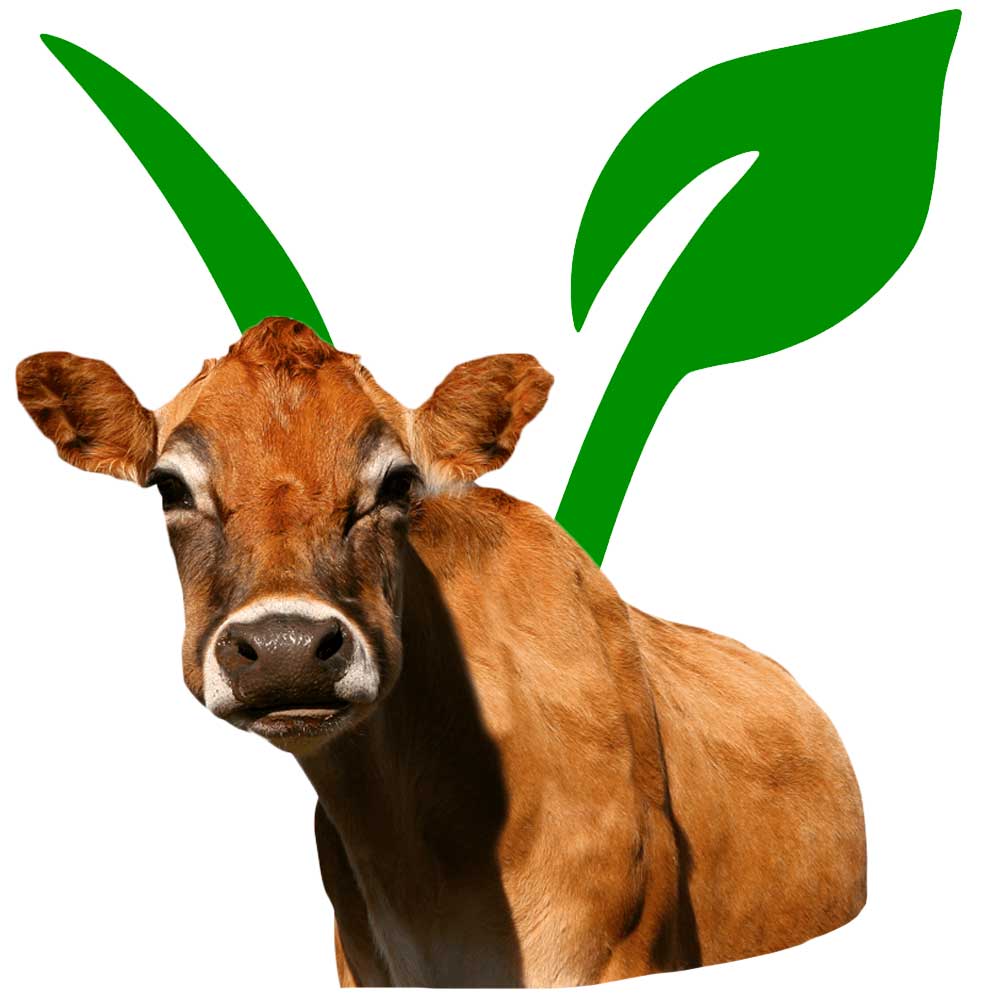
Leather bags, shoes, fur coats, and other goods made from animal leather, feathers, and wool affect animal populations and, thus, humanity’s survival on this planet.
In comparison, clothing brands that are cruelty-free and vegan protect animals.
These companies utilise leather and fur alternatives in their products, thereby saving animals from exploitation and death while preserving the balance of the ecosystem.
Sustainable Fashion FAQs
What Does Sustainable Fashion Mean in Simple Terms?
Sustainable fashion refers to clothing that is designed, manufactured, distributed, and used in an environmentally friendly manner.
Ethical fashion, a related term prevalent in the world of conscious consumerism, refers to clothing made in ways that value social welfare and worker rights.
However, ethical and sustainable fashion are intricately tied together because environmentalism is closely linked to socially equitable practices.
How Sustainable is the Global Fashion Industry?
The word sustainable means “capable of being sustained.” Therefore, a sustainable fashion industry must operate in ways that can continue to function effectively for years and decades.
Unfortunately, this is not true of today’s industry, dominated by ‘fast fashion’ manufacturing, which refers to clothing intentionally designed to be consumed quickly at low prices, leading shoppers to view clothes as disposable – wearing them just a few times before throwing them out or moving on to newer and trendier cheap clothes.
The current fast-fashion cycle is far from sustainable, as it depletes the Earth’s natural resources at an exponential rate, exploits workers worldwide, and generates an overwhelming amount of waste.
In contrast to traditional fashion houses, which produce only a few seasonal collections per year, fast fashion brands produce as many as two new collections per week in a continuous cycle of production, consumption, and waste creation.
What Makes a Fashion Brand Sustainable?
Imagine this: A clothing brand is considered “ethical” for ensuring proper working conditions and fair wages for garment workers.
However, if the same ethical label uses plastic and other synthetic materials, it falls into the non-eco-friendly category.
Moreover, the brand becomes unethical from an animal welfare angle if it uses animal leather.
So, performing one of the mentioned activities is insufficient for a label to be considered sustainable.
It must abide by as many terms as possible to ensure environmental and social sustainability.
What is Greenwashing?
In straightforward terms, greenwashing occurs when companies claim to be doing good for the environment (or promoting social justice) while actually not doing so.
According to Wikipedia, “Greenwashing, also called “green sheen,” is a form of marketing spin in which marketing IS deceptively used to persuade the public that an organisation’s products, aims, and policies are environmentally friendly.”
Greenwashing in the fashion industry occurs through deceptive certifications.
The purpose of certifications in the fashion industry is to establish trust between buyers and retailers.
However, for a company to ‘obtain’ one of these certifications, producing a single organic cotton t-shirt is sufficient.
In reality, sustainable fashion certificates are often granted to those who pay for them.
It is a minefield where large corporations amass certificate after certificate.
At the same time, small family labels that cannot afford to pay for certifications are left out and made to look unethical or unsustainable.
There are a few things you can do to ensure the garment you buy is not ‘greenwashed.’
- Check the certificate issuer – is it an independent or a commercial enterprise?
- See where the materials in your product originate.
- Determine if the brand’s philosophy aligns with your own.
- What is the brand’s view on the future of fashion?
- Check if the brand is on dedicated vintage clothing and sustainable fashion marketplaces.
- Finally, ask the brand questions about the materials used and see how open and prompt they are.
- If you don’t receive an answer, that’s a bad sign, regardless of how many sustainable certificates they have.
Is There Hope for a More Sustainable Future in Fashion?
The fashion industry can be produced sustainably via organic materials, biodegradable dyes, and engineering patterns that create zero waste.
But regardless of how many sustainable materials we use, shopping behaviours must also change to address social and environmental concerns.
The fashion industry is still elevating its social and environmental standards, and you can help by shifting towards a green, eco-friendly, and sustainable wardrobe.
What Can You Do for Sustainable Fashion?
The primary role of sustainable fashion is to raise awareness about the environmental impact of fashion consumption.
By now, you should be familiar with the most famous examples of sustainable fashion, including ethical, slow, vegan, eco-friendly, fair trade, recycled, and upcycled products.
You also learned about the top ten sustainable fashion companies currently operating, brands you can trust and support.
As you continue to explore and shop, ensure the brands you’re buying from are minimising their negative impact on the environment while improving the working conditions of their employees.
Check if the label is sustainable; just because they sell vegan handbags or leather jackets does not mean they are also eco-friendly.
Increase the lifespan of your clothing and accessories by repairing, remaking, upcycling, and reusing your products.
Buy from sustainable clothing companies that respect biodiversity, the ecosystem, and the planet’s natural resources.
From brands that use carbon dioxide-free and renewable energy sources, such as wind, solar, and ocean, at every stage of the manufacturing and recycling processes.
In summary…
With a carbon footprint accounting for over 10% of global greenhouse gas emissions, the fashion industry is significantly contributing to environmental destruction.
A change is needed, from raising awareness of sustainable fashion practices to taking an active role in making a change.
Fortunately, positive changes are happening in the fashion landscape: more ethical brands, customers demanding sustainable clothing options, and even a dedicated, ethical clothing search engine.
Sustainable fashion focuses on clothing designed, manufactured, distributed, and used in environmentally friendly ways.
To support sustainable fashion, you should:
- Purchase locally made clothes from factories run on renewable energy or clothes made with low-impact, natural, and organic materials, recycled or upcycled from deadstock materials, eco-friendly dyes, and/or zero- or low-waste designs.
- Purchase thrift or second-hand clothing.
- Prolong the life of your clothes by taking care of them well, mending and tailoring them as needed, and making alterations to modernise their looks to match your current tastes.
With over twenty years of front-row fashion and styling events, collabs with haute-couture houses, and a PhD in Luxury Fashion, Laurenti is an expert in crafting personalised looks that depict old-money sophistication.
After years of managing hundreds of fashion brands from London's office of a global retailer, Mandy has ventured into freelancing. Connected with several fashion retailers and media platforms in the US, Australia, and the UK, Mandy uses her expertise to consult for emerging fashion brands create top-notch content as an editorial strategist for several online publications.
Currently, the community manager of Platini Jeans - Los Angeles, Betzaida Ruiz is a seasoned fashion, beauty, and lifestyle author with expertise as a personal shopper for 'Personaling' Spain and 'Personaling' Venezuela, and editorial contributions for L'Oréal, Escales Paris, Origins, AVA9 Australia, Beauty Blender, Rosegal, Dresslily, Germaine de Capuccini, Stileo, Beauty Check, Ollia Tzarina, Herbolario Rosana, Perfumerias Laguna, GoldSea Swimwear, and of course, The VOU.
With years of expertise in high-end fashion collabs and a PhD in Sustainable Fashion, Ru specialises in eco-luxe wardrobes for the modern gentleman seeking understated refinement.



Thanks for introducing the Higg Index. This is a good step forward in standardizing the metrics for the industry
Amazing article. Thank you!
i am studying a fashion on my own. your article is a amazing and kind. thank you for your important knowledge. huge love!!
A lot of people don’t tend to think in terms of price/carbon footprint per wear. In long run, spending money on something timeless and well-made basically costs less than buying cheaply made fast fashion stuff that needs to be replaced in a year. I think part of the problem, though, is the lack of brick-and-mortar options for ethical fashion. It’s so difficult to find physical stores where you can inspect the quality and fit before you buy.
I’ve learned more about sustainable fashion from this article than 3 years of uni studies and research. Thanks for explaining in such detail what is sustainable fashion and more importantly, why sustainable fashion is so important right now, your articles are beautiful and much appreciated.
Crazy how many people say they care about sustainable fashion but in reality they either have no idea what they’re talking about, and say that just for virtue signaling, or simply don’t care. Sustainable fashion is not just about shifting to organic cotton t-shirts because you think are better for your skin, but about animals, the environment, plants, crops, and people. So if you’re into sustainable clothing and fashion, do your homework and this article is such a great source!
I thought that I know what sustainable fashion means until I came across this excellent article. Well put together, and easy to understand, it made my life so much easier and got me a top mark on the sustainable development assignment!!! Love you guys!
As a doctor in Brazil, sustainability in general and sustainable fashion, in particular, are very important to me, and my peers. Wish my country would introduce similar eco-friendly policies that force local fashion brands to take a more sustainable approach to manufacture and selling.
I’m a self-taught mixed media artist, special effects makeup student, glitter enthusiast, kitsch fanatic, lover of obese animals, connoisseur of burritos, and an all-around good citizen that’s trying to make a living out of San Francisco by teaching people how to paint, cook, and so on. Sustainable fashion is a new subject to me, but it comes from my interest in reducing material waste in the products we cook, the painting we use, the vax, and so on and I feel that the knowledge I got here applies to my business as well.
I feel that the word ‘Sustainability’ in the context of fashion is still misunderstood and issued. Sustainable fashion should describe ways of reducing environmental impacts – from raw material creation, processing, and manufacturing to wearing and caring for and even clothing disposal. Yet, it’s all about preserving materials which is just a small facet of the whole concept.
This has taught me a lot since i am a person who is not on fahion but i wear clothes that are on quality because i dont want to go shops and buy again
Great and informative article, I have been one to religiously look at the info label on most of the clothes I wear and discovered that not all clothing are off environmentally conscious material, whether expensive or not. This has changed my relationship with purchasing clothes not for just supporting a certain brand but to support the awareness of the brand in creating clothes sustainable and made from eco friendly materials.
Great insights on sustainable fashion! It’s so crucial for us to be aware of the impact our clothing choices have on the environment. I never realized how much waste the fashion industry generates. I’m definitely inspired to make more conscious shopping decisions. Thank you for shedding light on this important topic!
Eco-friendly custom apparel that combines sustainability and modern design is the future, unfortunately also very hard to find so please, if anyone here knows, recommend me a few good and reliable brands to shop from!